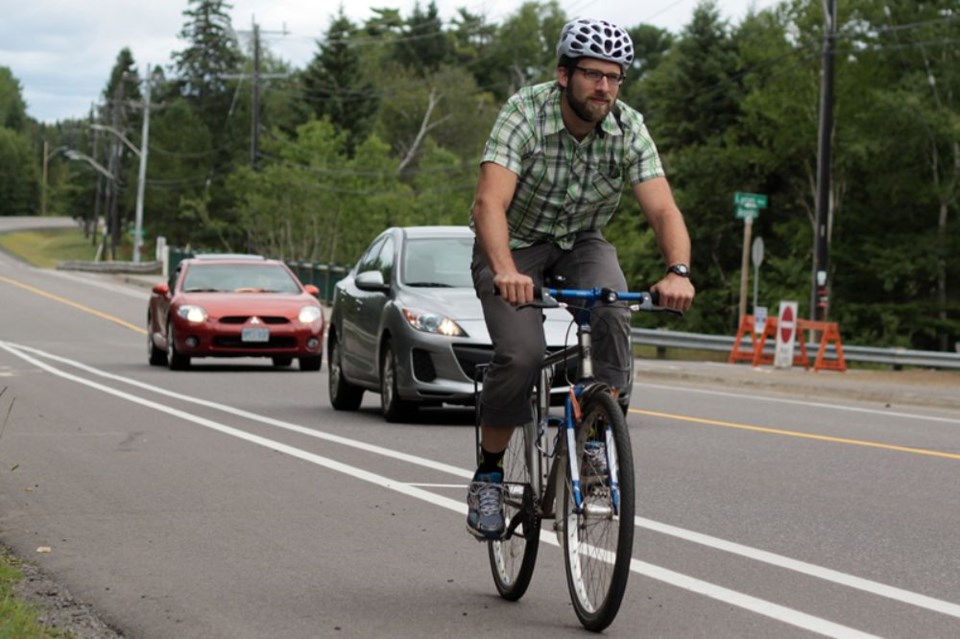THUNDER BAY – The city’s mobility coordinator sees Arundel Street as a potential sign of the future for active transportation.
By the end of the summer the north side roadway will be the first in Thunder Bay to feature both a buffered bike lane as well as a physically protected two-way multi-use recreational trail.
“The number one issue is people want to feel like they’re separated from vehicular traffic,” said city mobility coordinator Adam Krupper.
“The biggest fear people have is riding along, minding their own business and getting hit from behind. The more separation, visual or physical we can put, than the better.”
The south side of the roadway, which previously had a bike lane and shared recreational trail, instead had the designated bike lane removed and the shared use lane expanded which will be protected from vehicular traffic by poles that can withstand collisions up to 80 kilometres per hour.
Installing the bollards is expected to cost about $8,000 and they will be spread out along Arundel from Toledo Street until Dewe Avenue.
The north side now has a bike lane that is separated from the vehicle lanes with a double white line.
Krupper said other cities across North America have started using similar lane designations which have had a successful impact in increasing active transportation traffic while reducing the number of collisions.
The Current River street, which provides access to popular recreation areas such as Boulevard Lake and Centennial Park, has long been a testing ground for the city’s active transportation infrastructure.
“Since we first started we’ve basically seen a doubling in usage and not just with cyclists but anecdotally from people running and walking,” he said.
“The reason for that is partially because the infrastructure is better and roadway is better but also because Arundel connects into an existing system and people can use these as fitness loops.”
While there are currently no official plans to implement a similar lane designation on a specific street, Krupper said one such as Kingsway Avenue on the south side.
The implementation of active transportation routes has had an impact on reconstruction of city streets. For example, Hudson Avenue is being redesigned to accommodate the lanes which will expand the Arundel corridor to Huron Avenue.
The bollards are expected to be in place by the end of August. New signage will also be installed to guide users and drivers on how to follow the new lane designations.
